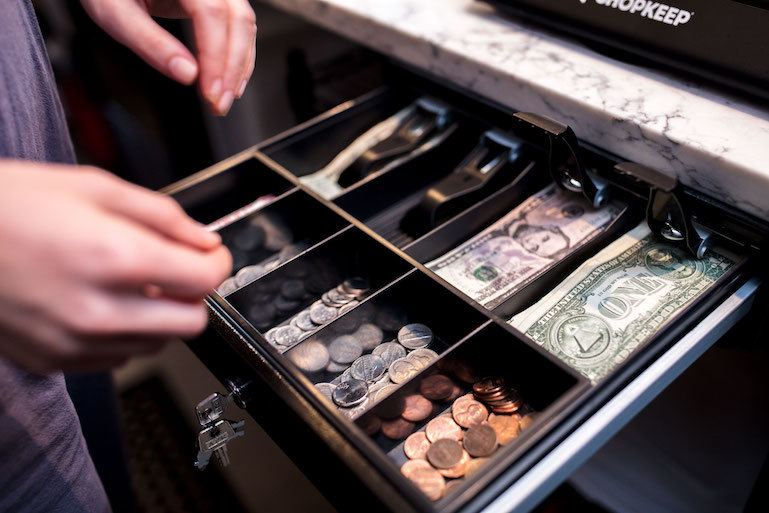
How to Get Small Business Loans with Bad Credit
So you’ve decided to start a small business or need to get your hands on some extra cash to supplement funding, but there’s one small problem, your credit history is getting in the way and you’re not exactly sure how to secure a small business loan with bad credit.
Typically the first thing that comes to mind for most small business owners and aspiring entrepreneurs is to march down to their local bank and apply for a small business loan. However, because most traditional lenders will require you to prove that you’re able to repay the money in order to secure the funds, securing a loan can prove to be quite difficult for small business owners with less than stellar credit.
Obstacles for Small Business Owners with Bad Credit
Your personal credit history is at the top of the list of factors that are taken into account when applying for a small business loan. FICO defines bad credit as a score of 300 to 629 and potential borrowers that fall within this range are considered to be at a high-risk for defaulting on a loan.
Lenders also examine the potential borrower’s business management experience, collateral, and equity investment in the business — as these aspects certainly go a long way in determining if you will actually qualify for a loan. So, if your personal credit history and business experience are spotty, it is very unlikely that a bank or other conventional lending source will approve you for a small business loan.
Now that we have the bad news out of the way, the good news is that all is not lost. There are lenders and alternative options willing to provide funding to small business owners with less-than-perfect credit.
Let’s begin with an overview of some of the best small business loans for borrowers with bad credit.
Best Small Business Loans for Borrowers With Bad Credit
Kabbage
If you’re interested in short-term loans, Kabbage is an excellent option. When determining who qualifies for a loan, Kabbage looks at business performance, not just a credit score. To qualify for funding through Kabbage, you will need to be in business for at least one year and have a minimum of $50,000 in annual revenue or $4,200 per month over the last three months. Learn More>
Fundbox
Similar to Kabbage, Fundbox provides revolving lines of credit for small business owners that need funds right away. To apply, potential lenders are required to have a business checking account, three months of transactions in a business bank account or two months of activity in a supported accounting software, a minimum of $50,000 in annual revenue, and an active small business based in the United States or a U.S. territory. Learn More>
OnDeck Capital
To qualify for a line of credit with Ondeck, businesses are only required to have a minimum credit score of 500. Although Ondeck’s qualifications are less intensive than those of traditional banking services, they do require applicants to be in business for at least one year and prove that they have met a minimum of $100,000 in annual revenue in the past 12 months. Learn More>
While lending criteria tends to be lower for direct lenders and peer-to-peer lending services like the ones described above, there are circumstances that could lead to a denial of an application. If you’re denied a small business loan, or can’t secure enough financing, there are a few alternative funding methods you can consider.
Top 6 Alternative Methods for Securing Small Business Funding
1. Peer-To-Peer Financing
Peer-to-peer financing or P2P lending for short is an excellent way to secure the funds you need, even if your personal credit scores are sub-par, to say the least. This lending method involves individuals that provide unsecured loans directly to borrowers. In essence, it cuts the lending institutions with their high level of borrowing standards completely out of the mix.
There are multiple peer-to-peer lending platforms available on the Internet, and typically the entire process is conducted online. The loan amounts and interest rates are either determined directly by the person lending you the money, or the platform. They most likely will follow some basic guidelines.
However, the terms are far more customized and personally based on your particular situation. Overall, peer-to-peer financing is an excellent method for obtaining a small business loan with bad credit.
2. Microloans
There are a plethora of non-traditional online lenders that offer microloans for small business owners and entrepreneurs who need cash in a pinch. The loan sizes typically range anywhere from $5,000 to $25,000. Many of these companies are willing to lend to borrowers with poor credit due to the smaller loan sizes. In return, you do need to be prepared to pay some pretty high interest rates.
Expect the interest rates to run anywhere from 12 to 20 percent, though they can be higher. Of course, the higher the interest rate, the larger your monthly payments will be. Microloans are also a good way to help repair your credit. Lenders typically report your account to the three main credit bureaus.
As long as you are making the monthly payments on time, the loan will have a positive impact on your credit, meaning you will actually see your scores begin to rise. Though microloans are a great way to secure a small business loan with bad credit, you do need to factor in the high cost of borrowing the money.
3. Credit Cards
It’s never a great idea to carry high balances on your credit cards. However, if you simply cannot secure the funds you need in any other way, this method is something to consider. You can either take cash advances or purchase the items you need using either your personal or business credit cards. Much like microloans, interest rates are typically on the high side. The good or bad news depending on how you look at it is, credit card companies only require a minimum monthly payment that is based on a percentage of the entire balance.
For example, you may owe $3,000 but are only required to pay $30 per month. This can certainly be helpful for brand new — or struggling — businesses that have little if any cash flow. On the flip side, the minimum monthly payments do not pay down any of the principal balance.
In essence, you can pay the minimum monthly payment forever and still owe the entire balance. Using your personal and or business credit cards should only be used as a last-ditch effort.
4. Enter Into a Partnership
If your business truly has the potential for growth, or there is a realistic chance that your idea will get off the ground and succeed, then entering into an agreement with a partner that has good credit may just be your best method for obtaining funding. Of course, in exchange for the equity in your existing or soon-to-be-formed business your new partner will be responsible for applying and qualifying for the bank or conventional loan.
The deal you make with your partner will determine who is responsible for servicing or paying for the loan on a monthly basis. The partnership agreement will also establish percentages of ownership and the overall responsibilities of each partner.
Taking on a partner in order to secure a small business loan with bad credit does present certain risks. You’ll be giving up leverage and a portion of your ownership rights. The other thing to factor in is how well you will get along with your new partner; so chose him or her wisely.
5. Family and Friends Round of Financing
Another creative method of securing a small business loan with bad credit is to borrow the money from people within your social and business network. The circle should include basically anyone that you know on a personal or business basis including associates, acquaintances, neighbors, friends, and of course family members.
There are two ways to look at the family and friends round of investing. It should either be a short-term loan with a solid plan in place in order to repay the lender, or you need to be prepared to give up a percentage of ownership in your business.
In essence, the second option brings in a partner with the added bonus of actually knowing the person prior to the partnership. That being said, you do risk straining relationships with people that you personally know.
For example, if you take a vacation or purchase a new automobile prior to paying them back, it may very well cause a problem. You also take the risk of personal investors holding the bag if your business should happen to fail. Of course, the partnership route may cause a set of entirely different problems.
Typically, the family and friends round of investors are shorter-term loans that require a repayment as soon as more conventional loans or investors are in place. Crowdfunding, which has become extremely popular should also be considered. If you’re not familiar with the concept, it is the practice of funding a business, project, or other venture by raising small amounts of money from a large number of people, typically through online-based platforms.

6. Merchant Cash Advance
Merchant cash advances are alternative financing options which require the small business owner to sell a portion of their business’ future revenue. Unlike traditional lenders, most cash advance lenders do not put restrictions on how you can use your funds. However, it is important to note that merchant cash advances offered to borrowers with bad credit tend to be extremely expensive.
According to GUD Capital, small businesses who receive a merchant cash advance can expect to repay 150% of the funding amount they received from the cash advance company. On top of the expensive rates, the repayments are generally made daily through automatic deductions from bank or merchant accounts, which can put a strain on cash flow.
SEE ALSO: Need access to funding? Find out if you qualify for ShopKeep Capital!
The Bottom Line
The best option for securing funding at a lower interest rate is to improve your credit score. However, having a bad credit score doesn’t have to equate to a doomsday scenario in your business.
If waiting for your credit score to improve is not an option, all of the options listed in this blog post are great alternatives for improving cash flow. When considering which option is best for you, make sure to consider the total cost of capital, APR, interest rate, and whether or not the lender is going to report your history to the appropriate credit bureaus. Understanding the impacts of applying for funding is just as important as securing the funding itself.
Want to try ShopKeep for yourself?
Just answer a few easy questions.
Need help finding the right point of sale?
Just complete the form. We’ll call you right back to explain how ShopKeep can work for you.
Hit the ground running.Sprinting, in fact!
Read our free, comprehensive guide, Small Business 101, to learn all you need to know about starting a thriving business.

